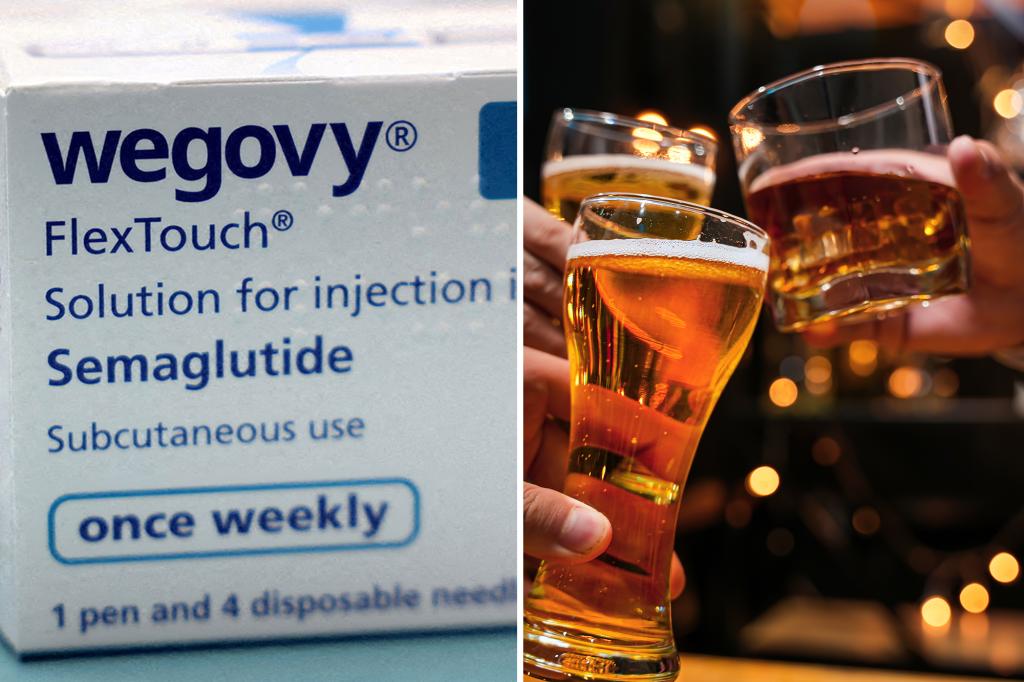Talk about a lucky charm.
Drugs like Ozempic — which mimic the appetite-suppressing GLP-1 hormone the body naturally produces after eating — have been shown to spur weight loss as well as ease knee osteoarthritis pain, calm skin conditions and lower the risk of dementia.
Now, an international team of researchers has found more evidence that people also booze a lot less when taking these meds.
“GLP-1 [drugs] have been shown to treat obesity and reduce the risk of multiple obesity-related complications,” said Professor Carel le Roux of University College Dublin in Ireland.
“The beneficial effects beyond obesity, such as on alcohol intake, are being actively studied, with some promising results.”
Le Roux’s team analyzed data from 262 overweight or obese adults prescribed liraglutide or semaglutide for weight loss at a clinic in Dublin.
Semaglutide is sold as Ozempic to treat Type 2 diabetes and as Wegovy for obesity.
Saxenda and Victoza contain liraglutide. Saxenda is for weight loss, while Victoza is for diabetes.
Volunteers reported their alcohol habits before the study began and were split into three groups — there were 31 non-drinkers, 52 rare drinkers (less than 10 drinks a week) and 179 regular drinkers (over 10 a week).
Most of the participants were female, the average age was 46 and the average weight was 216 pounds.
The researchers followed 188 of the 262 patients for an average of four months of treatment. None of the participants drank more than usual during that time.
Average alcohol intake decreased from 11.3 to 4.3 drinks a week, a reduction of almost two-thirds.
Among the regular drinkers, consumption declined from 23.2 to 7.8 drinks a week.
The findings were published in January in the journal Diabetes, Obesity and Metabolism and are due to be presented in the coming days at the European Congress on Obesity in Malaga, Spain.
“The exact mechanism of how GLP-1 [drugs] reduce alcohol intake is still being investigated, but it is thought to involve curbing cravings for alcohol that arise in subcortical areas of the brain that are not under conscious control,” le Roux said. “Thus, patients report the effects are ‘effortless.’”
Le Roux reported that the alcohol reduction from GLP-1s mirrors the results of nalmefene, a drug used to treat alcohol dependence in Europe.
Harmful alcohol use accounts for about 2.6 million deaths a year, 4.7% of all global deaths.
Treatment typically involves counseling, such as behavioral therapy, and medications that reduce the urge to drink. However, relapse rates are high.
GLP-1s are not a cure-all, to be sure. Side effects can include gastrointestinal issues like nausea, and less often, hair loss and skin pain. In very rare cases, blindness and behavioral changes can occur.
Read the full article here

